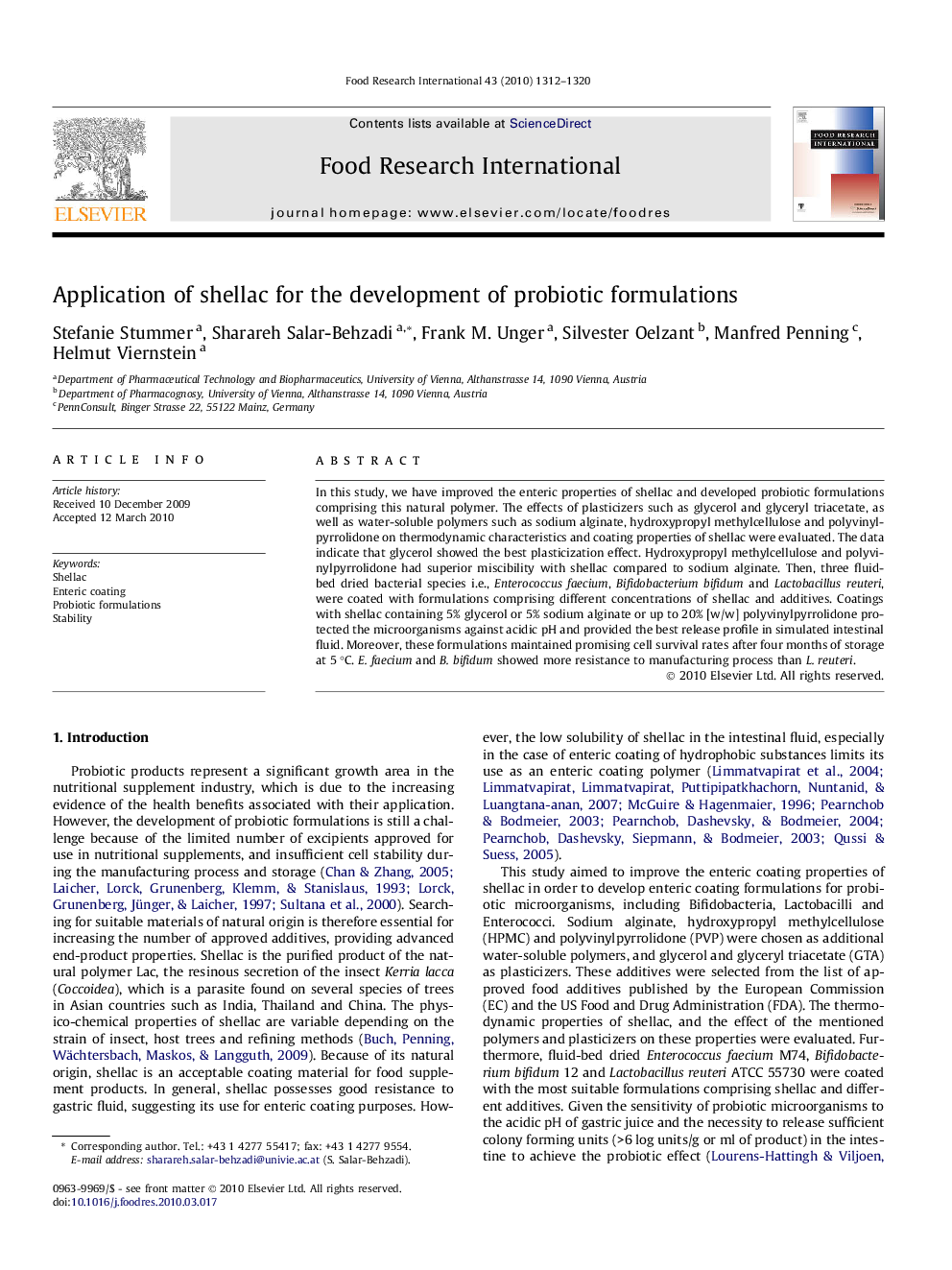| Article ID | Journal | Published Year | Pages | File Type |
|---|---|---|---|---|
| 4562597 | Food Research International | 2010 | 9 Pages |
In this study, we have improved the enteric properties of shellac and developed probiotic formulations comprising this natural polymer. The effects of plasticizers such as glycerol and glyceryl triacetate, as well as water-soluble polymers such as sodium alginate, hydroxypropyl methylcellulose and polyvinylpyrrolidone on thermodynamic characteristics and coating properties of shellac were evaluated. The data indicate that glycerol showed the best plasticization effect. Hydroxypropyl methylcellulose and polyvinylpyrrolidone had superior miscibility with shellac compared to sodium alginate. Then, three fluid-bed dried bacterial species i.e., Enterococcus faecium, Bifidobacterium bifidum and Lactobacillus reuteri, were coated with formulations comprising different concentrations of shellac and additives. Coatings with shellac containing 5% glycerol or 5% sodium alginate or up to 20% [w/w] polyvinylpyrrolidone protected the microorganisms against acidic pH and provided the best release profile in simulated intestinal fluid. Moreover, these formulations maintained promising cell survival rates after four months of storage at 5 °C. E. faecium and B. bifidum showed more resistance to manufacturing process than L. reuteri.
